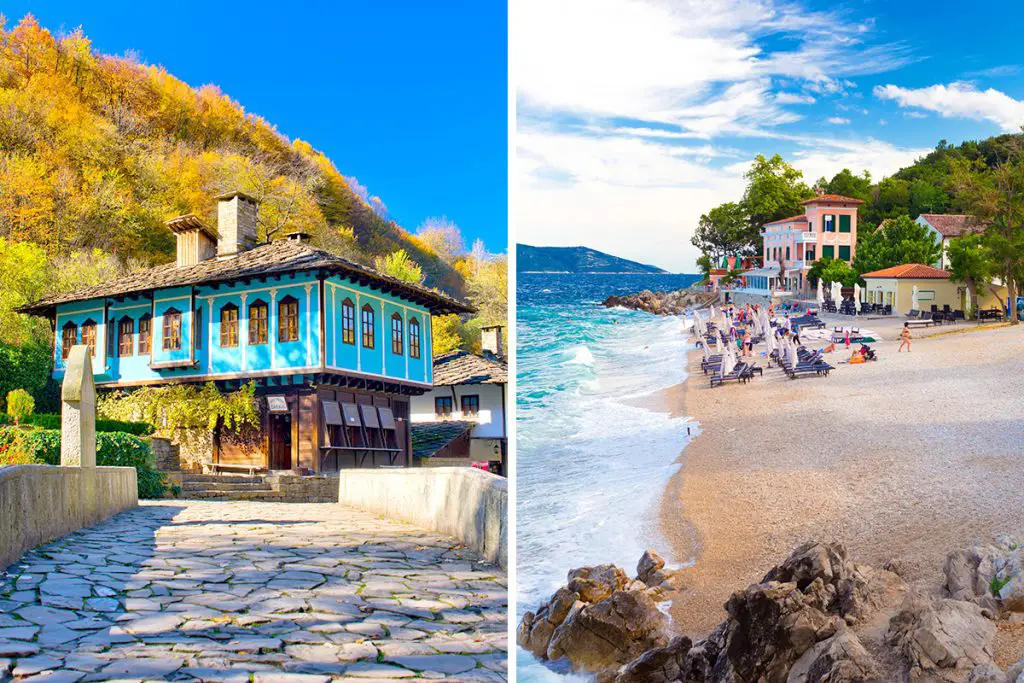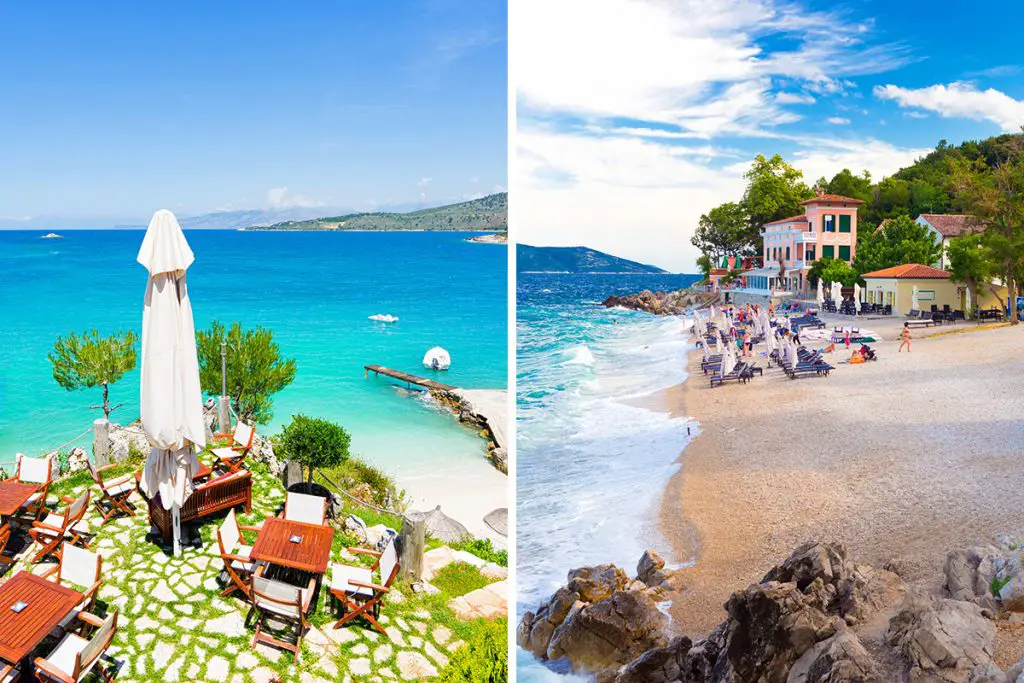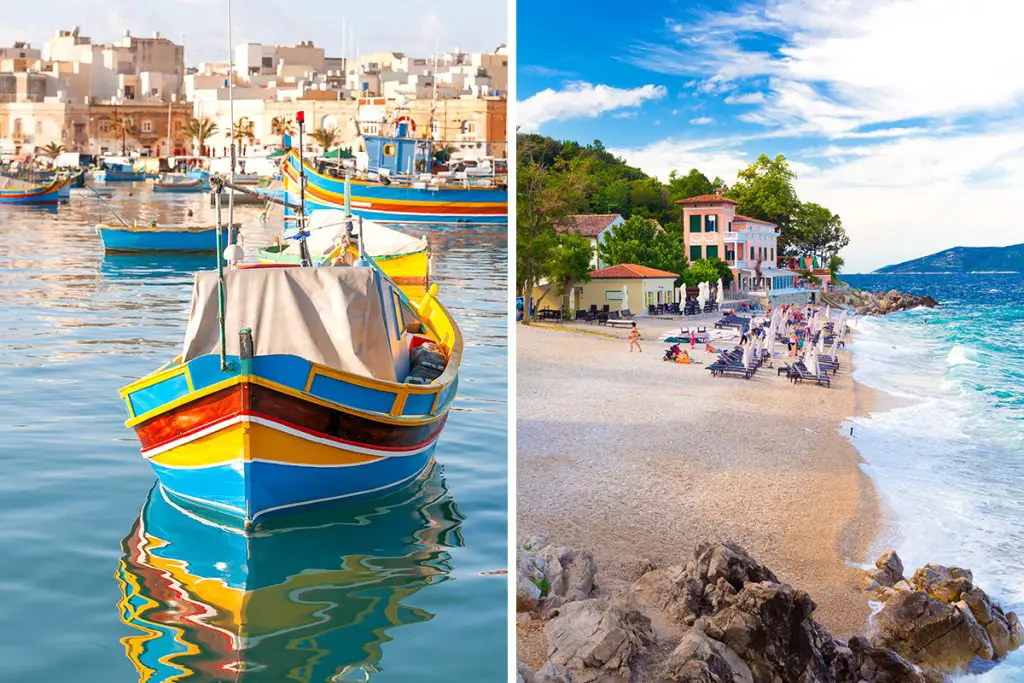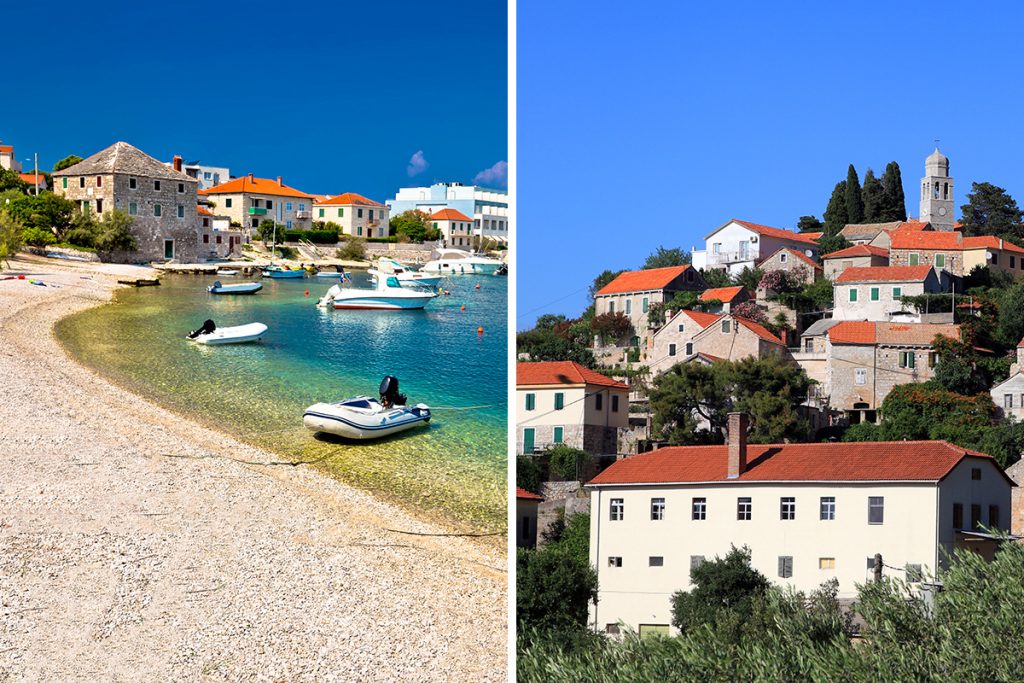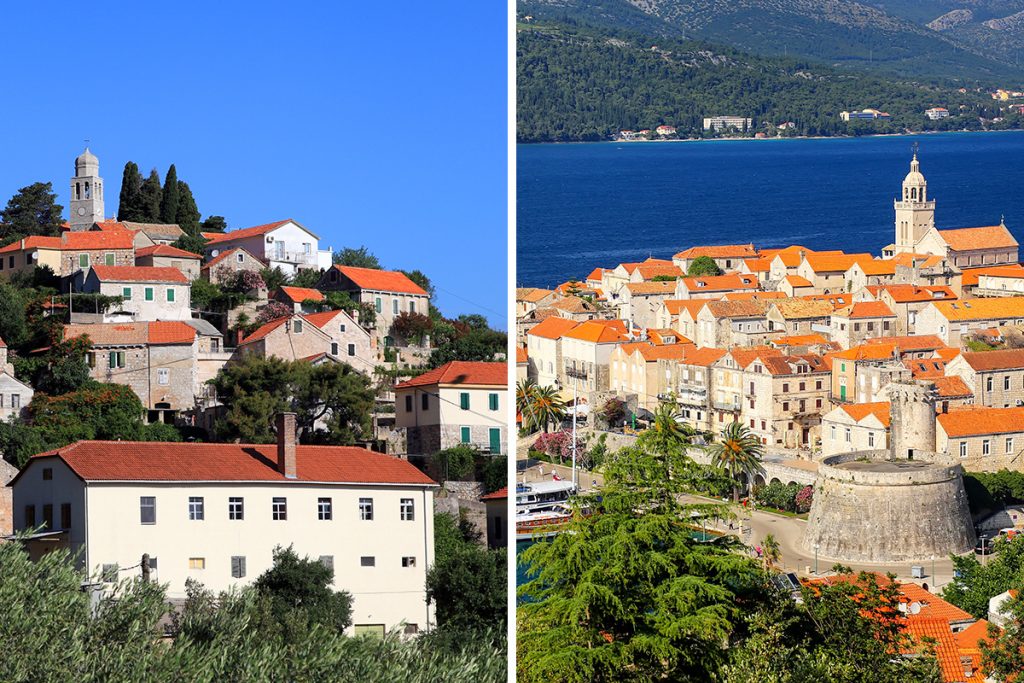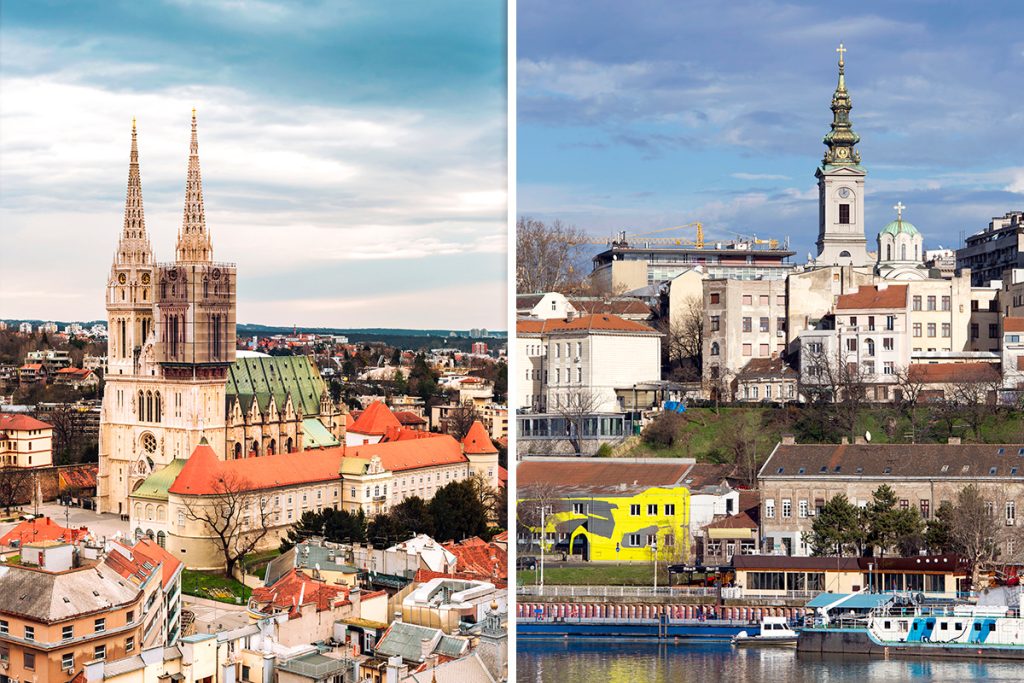In Croatia’s dazzling Adriatic, Hvar and Split each present a unique allure. Hvar, known as the ‘sunniest spot’ in the country, offers tranquility mixed with elegance. In contrast, Split is a bustling city that perfectly marries the old and the new. Now, are you ready to dive deeper into what these fantastic places have to offer?
History & Culture
Unveiling the cultural tapestry and history of Hvar and Split is like peeling back the layers of time. Each layer reveals unique stories that have shaped these destinations into the fascinating places they are today.
Hvar, often referred to as the ‘Queen of the Croatian Dalmatian Islands’, has a history that stretches back to the time of the ancient Greeks. Its strategic location made it a sought-after prize for naval powers.
As you explore Hvar, you can sense the deep-seated history that has been woven into the fabric of the island. Its rich culture reflects a blend of influences from different eras.
On the other hand, Split carries its history on its sleeve. Its origins can be traced back to the Roman era, and the city is centered around the remarkable Diocletian’s Palace. Split has lived through many ages – Roman, Byzantine, Venetian, French, and Austrian, each leaving an indelible mark on the city’s culture.
While Hvar exudes an air of quiet sophistication and old-world charm, Split vibrates with an energy that comes from its dynamic blend of the ancient and the modern. Both destinations are steeped in history, but they express their cultural identities in distinct ways.
To sum it up, if you are an island lover who appreciates a laid-back atmosphere and a rich historical tapestry, Hvar might be the one for you. However, if you prefer a bustling city environment with an equally impressive history and cultural diversity, Split could be your perfect match.
Attractions & Activities
When it comes to attractions and activities, both Hvar and Split offer experiences that will fill your days with wonder. The fascinating sites and fun pursuits in these destinations will make your trip memorable.
In Hvar, you can stroll through the charming Stari Grad Plain, a UNESCO World Heritage site that has been cultivated since Greek times. Your eyes will be greeted by picturesque stone walls and small huts dotting the landscape.
For a bit of adventure, you can take a hiking trip to the Fortress Fortica Španjola. Standing on top, the breathtaking view of the Pakleni Islands will surely make your climb worthwhile.
On the other hand, Split is a city that will keep you busy. Diocletian’s Palace is a must-visit. This UNESCO World Heritage site was once the retirement home of the Roman Emperor Diocletian. You can also take a leisurely walk along the Riva Harbour. Enjoy the bustling scene while looking at the beautiful backdrop of coastal mountains.
Both Hvar and Split provide historical attractions that are as engaging as they are enriching. However, if you prefer a more laid-back experience, Hvar’s calm and serene attractions might appeal to you more. If you enjoy a more bustling and vibrant scene, Split’s energy and diversity of activities could be a better fit for your travel style.
Beaches
The Croatian coastline is famous for its beautiful beaches. So, whether you choose Hvar or Split, your trip to the beach will be nothing short of amazing. However, each destination offers a unique beach experience.
Hvar’s beaches are more secluded and intimate, providing a perfect getaway for those seeking peace and quiet. One of the most popular is Dubovica Beach, located around 8 kilometers (5 miles) east of Hvar town. This small pebble beach offers clear waters and stunning views, making it a perfect spot for sunbathing and swimming.
On the other hand, Split’s beaches are more dynamic and lively. Bacvice Beach, located near the city center, is a sandy bay popular with locals and tourists alike. It’s approximately 1 kilometer (0.6 miles) from the Diocletian’s Palace, making it easily accessible. Here, you’ll find people engaging in a game of picigin, a traditional Croatian ball game.
In conclusion, if you’re looking for a peaceful beach retreat, Hvar’s beaches may be more to your liking. However, if you want a lively beach scene with a local feel, Split’s Bacvice Beach would be an excellent choice.
Eating, Drinking & Nightlife
When it comes to food and drinks, and nightlife, both Hvar and Split have their unique offerings. Your taste buds will be in for a treat with the fantastic local dishes and drinks.
In Hvar, seafood is a standout. Freshly caught fish, squid, and shellfish are common in many dishes. Imagine yourself at a cozy seaside restaurant, savoring a delicious plate of grilled fish, while enjoying the beautiful sea view. As for drinks, Hvar is known for its local wines. Don’t miss the chance to taste the renowned Hvar Plavac Mali wine.
On the flip side, Split offers a more diverse food scene. With a mix of seafood, meat dishes, and local specialties like Soparnik (a Swiss chard-filled pie), your palate will experience a wide range of flavors. And when it comes to drinks, you should try Rakija, a popular Croatian spirit that comes in various flavors.
When the sun sets, Hvar and Split transform into vibrant destinations. Hvar’s nightlife is centered around chic beach bars and nightclubs like Hula Hula Beach Bar and Veneranda Club. Meanwhile, Split’s nightlife offers a mix of laid-back beach bars like Zenta Beach Club and lively nightclubs like Central Club.
In summary, if you’re after an authentic seafood experience with a taste of local wine, Hvar should be your pick. But, if you prefer a diverse food scene with vibrant nightlife, you’ll enjoy Split.
Shopping
For shopaholics, Hvar and Split offer a variety of shopping experiences. From local markets to boutique stores, you’re in for a delightful shopping adventure.
Hvar is known for its lavender products. You can find a myriad of shops selling everything from lavender oils to soaps. There are also boutiques offering chic beachwear and unique local designs.
If you’re looking for souvenirs, you can also check out the Hvar Lace Shop, where you can admire and buy the exquisite lace made by Benedictine nuns.
Split, on the other hand, is a shopper’s paradise with a broader selection. Marmontova Street and the surrounding area offer a mix of high-street brands and local boutiques. For a more local experience, try visiting the Green Market where you can buy fresh produce, local delicacies, and handmade crafts.
You can also explore the Diocletian’s Palace, where you can find hidden gems such as antique shops and art galleries.
So, if you prefer boutique shopping with local products, especially lavender-related, Hvar is the place to be. However, if you’re looking for a more varied shopping experience, you will find it in Split. Both cities have something to offer for every taste and budget.
Accommodation
When it comes to finding a place to rest after a day of exploring, both Hvar and Split offer a wide range of options. No matter your preference or budget, you’ll find something to suit you in both of these Croatian gems.
Hvar is renowned for its luxury accommodations. Many upscale hotels line the coast, offering you a stunning view of the Adriatic Sea right from your window. On the other hand, if you’re traveling on a budget, there are also several guesthouses and budget-friendly hotels tucked away in the narrow, winding streets of the town.
In contrast, Split provides a more diverse array of accommodation options. The city boasts everything from high-end hotels to budget hostels and apartments. And, if you’re interested in a slice of history, you can even find accommodations in the ancient Diocletian’s Palace!
In summary, Hvar tends to cater more to the luxury end of the market, with a focus on sea-view accommodations. In contrast, Split offers a wide range of options to suit various budgets and preferences, with many accommodations located near or even in historical sites.
Family-Friendliness & Children’s Activities
If you’re planning a family trip, you’ll want to know which destination, Hvar or Split, is more family-friendly and offers better children’s activities.
Hvar, with its relaxed atmosphere and safe, sandy beaches, is a great choice for families. Kids will love building sandcastles on the beach and swimming in the clear blue waters. There’s also the chance to go on fun boat tours around the Pakleni Islands.
Another attraction for families is the Hvar Adventure Park, where you can enjoy zip-lining, paintballing, archery, and more. The park is suitable for all ages and skill levels, and provides a thrilling experience in nature.
Split, meanwhile, offers a different kind of family adventure. Its ancient Roman ruins, like Diocletian’s Palace, can provide an exciting history lesson for kids.
Moreover, the city hosts various festivals throughout the year that are fun for the whole family. One of them is the Split Summer Festival, which features music, theater, dance, and art performances in various venues around the city. Another one is the Split Carnival, which transforms the city into a colorful spectacle of costumes, parades, and parties.
Summing up, both Hvar and Split have something to offer families. Hvar has beautiful beaches and water activities, while Split presents opportunities for cultural and historical exploration.
Getting There & Getting Around
Whether you’re starting from mainland Croatia or from another part of the world, getting to Hvar and Split, and moving around once you’re there, are important considerations.
To get to Hvar, you’ll most likely fly into Split and then take a ferry. The ferry ride from Split to Hvar takes about 2 hours (or 60 minutes on a catamaran). Once you’re in Hvar, getting around is mostly on foot due to its small size, but there are taxis and buses available too.
For Split, it’s a bit easier. Split has its own airport, and the city center is only about 25 kilometers (15.5 miles) away. You can get there by taxi, bus, or car. Once in the city, you can easily navigate on foot, but there’s also an extensive bus network for longer trips.
In conclusion, getting to Hvar involves an extra step – a ferry ride from Split, but it’s a scenic journey you might enjoy. Getting around is easy in both destinations, with plenty of public transportation in Split and a walkable town center in Hvar.
Weather
Choosing between Hvar and Split may also depend on the kind of weather you prefer. After all, it’s important for your vacation weather to be enjoyable.
Hvar is known as the sunniest spot in all of Croatia. With over 2,700 hours of sunshine each year, this destination truly sparkles. Summers are hot and dry, and temperatures often reach around 30 degrees Celsius (86 degrees Fahrenheit). Winter months are not too harsh, with temperatures usually hovering around 10 degrees Celsius (50 degrees Fahrenheit).
Now let’s turn our attention to Split. This city also enjoys a Mediterranean climate but experiences slightly more rainfall throughout the year, especially during the colder months.
However, the summers can be quite warm, similar to Hvar, averaging around 30 degrees Celsius (86 degrees Fahrenheit). Winter temperatures are also around 10 degrees Celsius (50 degrees Fahrenheit).
In summary, while both Hvar and Split experience similar temperatures throughout the year, Hvar has the upper hand with more sunshine and fewer rainy days. So, if you’re a sunseeker, Hvar is your better bet.
Safety
Safety is a crucial factor to consider when planning your travels. Both Hvar and Split are generally considered safe, but let’s look at them in detail.
Hvar, as a smaller island town, has a low crime rate. You’ll find the locals friendly and welcoming, which adds to the overall feeling of safety. But remember, it’s a tourist hotspot, so always keep an eye on your belongings and be aware of your surroundings.
In contrast, Split is a larger city and sees a bit more crime. However, most of it is petty theft, nothing too serious. The usual travel precautions, like not leaving valuables unattended, are advised here as well.
Apart from crime, healthcare is another aspect of safety. Both Hvar and Split have adequate healthcare facilities. So, if a health emergency arises, you can get the necessary medical help.
To sum up, both Hvar and Split are safe destinations, but maintaining vigilance and taking common-sense precautions is advisable wherever you travel.
Cost
Cost is often a major deciding factor when planning a trip. How do Hvar and Split fare in this aspect?
Hvar, being a bit more upscale, tends to be more expensive. Whether it’s dining, accommodation, or activities, you’ll find that the prices here can be quite high, especially during the peak summer season.
Split, on the other hand, can be a bit more budget-friendly. Though not cheap, the costs for food, accommodation, and general expenses are typically lower than in Hvar.
Regardless of where you go, your costs will largely depend on your preferences. If you lean towards luxury, Hvar might be the place for you. But if you’re looking to save some money without compromising too much on the experience, Split could be a better option.
In a nutshell, whether you prefer the luxury of Hvar or the slightly more economical Split, both offer memorable experiences. Just be mindful of your budget and plan accordingly.
Which Is Better – Hvar or Split?
Choosing between two charming destinations like Hvar and Split is no easy task. Each city has its unique offerings and appeals to different kinds of travelers.
In terms of history and culture, both cities shine brightly. Hvar, with its rich historical tapestry, promises an immersive experience with every turn. However, Split, steeped in antiquity, intrigues history buffs with its stunning Diocletian’s Palace and more. If you’re a true history enthusiast, Split’s tangible past might be more enticing.
When we consider attractions and activities, Hvar dazzles with its sunshine-filled outdoor activities, while Split wins hearts with a blend of historical and modern attractions. If you’re someone who craves a vibrant blend of both worlds, Split could be your top pick.
Looking at the beaches, Hvar with its secluded bays and clear turquoise waters might edge ahead of Split’s pebbly, city-side beaches. If sunbathing under the dazzling Adriatic sun is high on your agenda, Hvar is calling you.
From a gastronomic standpoint, Hvar’s upscale dining scene is sure to delight food connoisseurs, whereas Split’s diverse culinary offerings cater to all palates and budgets. Night owls may enjoy Split’s bustling nightlife slightly more.
As for accommodations, Hvar offers more luxurious options, while Split provides a wider range of budget-friendly lodgings. Family-friendliness also varies, with Hvar being ideal for a quieter family getaway and Split offering more children’s activities.
Getting to either location has its own charm – the ferry ride to Hvar offers scenic views, while getting to Split is more straightforward with its well-connected airport. While both places enjoy favorable Mediterranean weather, Hvar edges ahead with its title of Croatia’s sunniest spot.
Concerning safety, both locations are relatively safe with adequate healthcare facilities, although common travel precautions are advised. Cost-wise, Split might be lighter on the pocket, with Hvar catering to a more luxury-focused crowd.
In conclusion, your ideal destination depends on your preferences. For a more luxury, sun-soaked beach vacation, Hvar is your best bet. For history buffs seeking a vibrant city experience, Split might just be the winner. Regardless of your choice, both Hvar and Split promise an unforgettable Croatian adventure!


